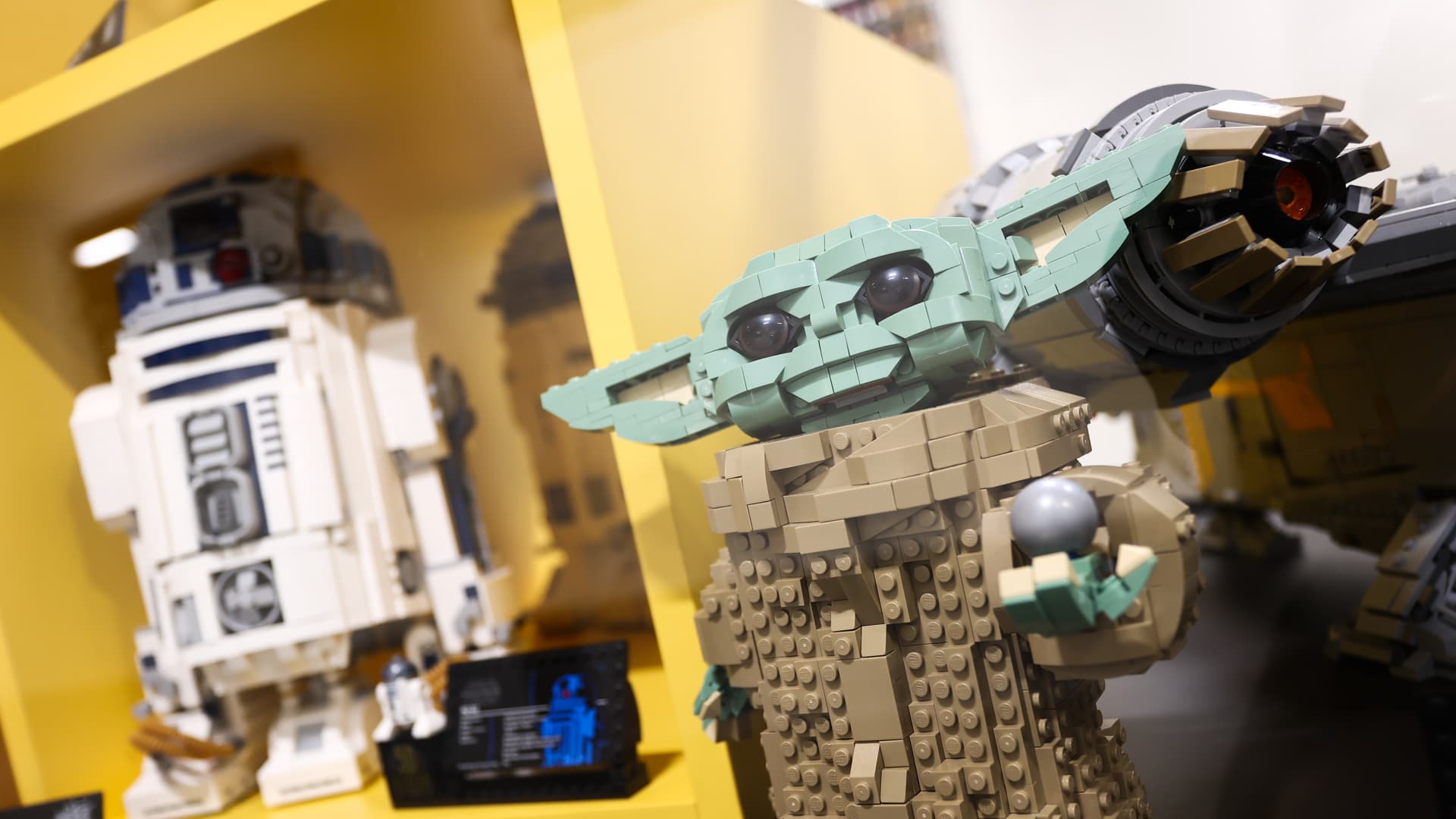
Ron Shaich, founder and then-CEO of Panera Bread, in December 2017.
Scott Mlyn | CNBC
Panera Bread founder Ron Shaich uses his new book, “Know What Matters,” to impart lessons learned from his decades in the restaurant business — and reveals some juicy details in the process.
Shaich’s book charts his entrepreneurial journey, starting with the general store at Clark University he founded as a student and ending with his decision to sell Panera for $7.5 billion in 2017.
Along the way, Shaich turned Au Bon Pain from a nearly bankrupt bakery into a chain of bakery cafes, transformed the St. Louis Bread Company into fast-casual giant Panera, sold off Au Bon Pain and then turned Panera into a digital powerhouse that introduced free Wi-Fi, mobile and kiosk ordering and delivery years ahead of its rivals.
But that’s not all. Here are six of the most interesting reveals from Shaich’s book, which hits shelves Tuesday:
1. McDonald’s tried to buy Panera
McDonald’s expressed interest in buying Panera in the early 2000s, Shaich writes. He and his then-chief financial officer, Bill Moreton, met with McDonald’s executives to hear about their proposal. The Panera team wasn’t particularly interested in selling Panera at the time, as they had just divested Au Bon Pain to focus on the growing fast-casual chain.
The meeting didn’t change Shaich’s mind, either. He writes that he wasn’t impressed when one of the executives compared Panera with Donatos — a pizza chain that McDonald’s ultimately ended up buying, along with Chipotle Mexican Grill and Boston Market. (McDonald’s sold off those other chains several years later to focus on its core business.)
2. Shaich thinks of Howard Schultz as his ‘frenemy’
Howard Schultz, then-CEO of Starbucks, in 2015.
David Ryder | Reuters
Starbucks and Howard Schultz, the man who turned the small coffee chain into a global giant, are recurring characters in Shaich’s book.
While their menus overlap little, Shaich views Starbucks as Panera’s closest competitor. He recounts some of Panera’s strategic wins over Starbucks, such as offering free Wi-Fi while Starbucks still made its customers pay for access.
“I thought of Schultz as my oldest ‘frenemy’ — the guy whose proverbial rear end I’d been chasing for three decades, ever since we met when Au Bon Pain was a handful of cafés in Boston and he had seven coffee shops in Seattle,” Shaich wrote.
Shaich also names Chipotle founder Steve Ells as another restaurant entrepreneur who saw the future of the industry and helped create the fast-casual segment. Ells, however, is spared the “frenemy” label.
3. Panera and Starbucks almost merged
The McDonald’s agreement never came together. But another deal for Panera almost made it to the finish line. Shaich and Schultz began working on a merger between Panera and Starbucks in 2016, he said.
More than a decade after meeting with McDonald’s, Shaich started seriously considering selling Panera as he prepared to step down from the business. He had previously retired, in 2010, but the decision didn’t stick. Shaich writes in the book that he never really left, staying active as executive chair of the company, before he rejoined as a co-CEO in 2012. (Schultz has also had difficulty leaving Starbucks behind, twice returning to take the reins as chief executive again.)
A Starbucks employee organizes salads and sandwiches.
Jerry Cleveland | The Denver Post | Getty Images
Schultz first proposed a partnership between Panera and Starbucks. Panera would make soup, salad and sandwiches for Starbucks cafes, while the coffee giant would supply Panera’s bakery-cafes with coffee. But Shaich found the idea too complicated and instead proposed a merger.
Ultimately, though, the deal fell through. Panera’s stock was rising at the time, making the agreement too expensive, Shaich writes. He also says he thinks that Schultz’s decision to step down as CEO in early 2017 probably played a big role in the decision.
4. The Obama administration offered Shaich a job
Before becoming an entrepreneur, Shaich thought his career would be in politics. His political ambitions fell by the wayside as he turned Au Bon Pain and then Panera Bread into national chains.
But those aspirations didn’t disappear entirely. In 2009, the Obama White House called Shaich about a job in the administration. Coincidentally, Shaich received the call when he was getting ready to make his final speech at Panera’s companywide meeting, known as the Family Reunion. Shaich writes that he knew at the time that he would retire, but he hadn’t yet announced it.
However, Shaich ultimately didn’t end up in the Obama administration.
“The White House job hadn’t panned out — they needed to press forward before I was free …” he wrote.
Instead, Shaich helped create No Labels, a political organization meant to support centrism and bipartisanship. The group has floated mounting a third-party challenge for the presidential election next year.
5. Panera’s patent to review order accuracy by video
Panera’s yearslong transformation to prepare for the digital age didn’t just include installing self-order kiosks and creating a mobile app. The strategy envisioned by Shaich also involved reconstructing its kitchen operations so employees could handle the swell of new orders quickly and accurately. Panera redesigned its kitchen layouts and processes multiple times to make sure that it worked.
One change that came to kitchens was cameras. Shaich writes that Panera received a patent to use video to review the accuracy of sandwich orders.
“At one point, I used to joke that Panera’s production lines were among the most-watched TV, midnight to 8 a.m., in India,” Shaich wrote.
Today, cameras in kitchens aren’t as novel. For example, startup Agot AI installs overhead cameras in restaurant kitchens and uses computer vision to scrutinize whether workers are preparing orders correctly.
6. Panera’s enemy turned into Shaich’s partner
Today, Shaich leads Act III Holdings, which was an early investor in Mediterranean chain Cava. The firm’s chief financial officer and partner is Noah Elbogen.
Shaich reveals in his book that Elbogen was once an antagonist. In 2015, as Panera was in the middle of its digital transformation, an activist investment firm called Luxor nominated two directors to Panera’s board with no notice and a long list of demands. One of the nominees was Elbogen, who spoke at a meeting with 300 Panera leaders.
Shaich writes that after Elbogen left the room, he then fired up the audience and decried “predatory investors.”
“I got the crowd so riled up with the fear of working for Noah that by the end they were chanting in unison, ‘F___ you, Noah. F___ you, Noah,'” Shaich wrote.
But Shaich says he came to like and respect Elbogen, even though Luxor was still considered the enemy. Roughly two years later, Luxor sold its stake. Panera’s stock was climbing as its digital strategy took hold and bore fruit.
“I was a little sorry to say goodbye to Noah when Luxor cashed out, though I couldn’t admit it at the time,” Shaich wrote.
Years later, when Shaich started Act III, he asked Noah to join.







